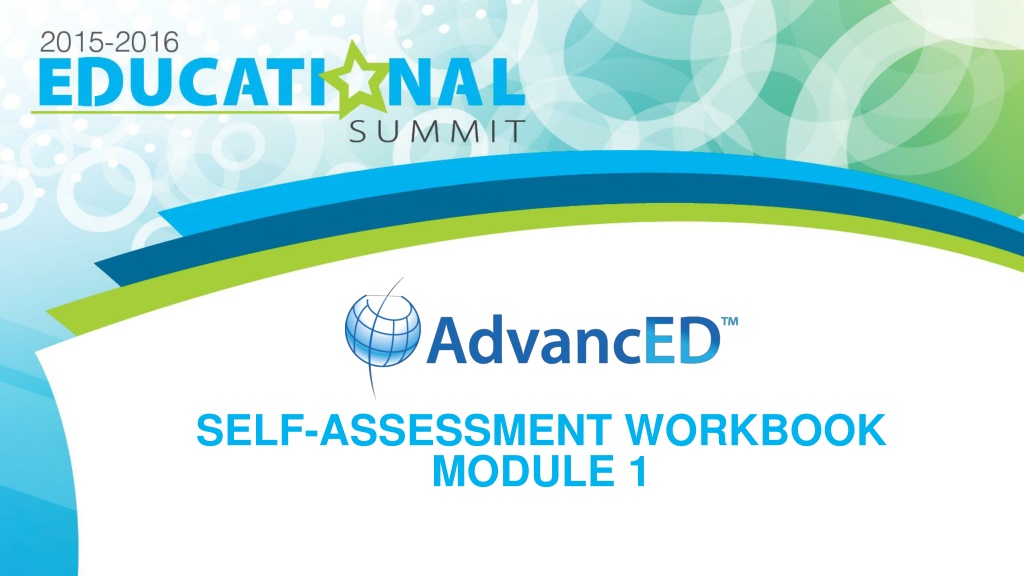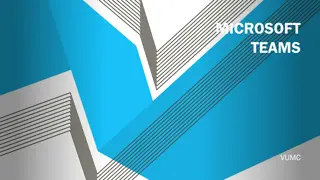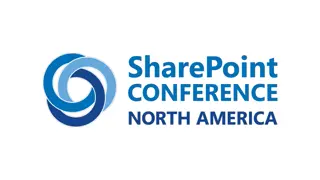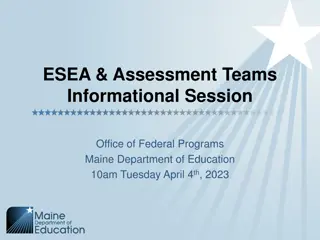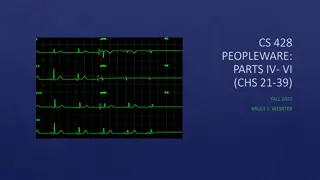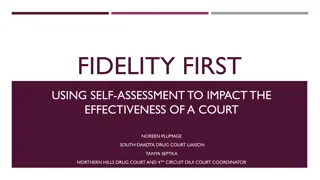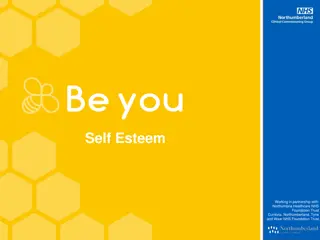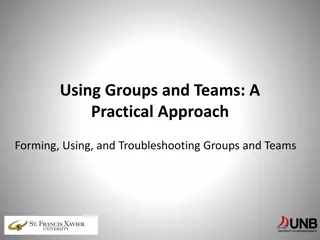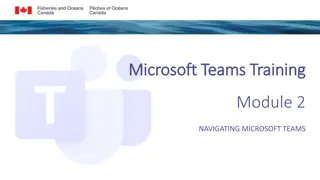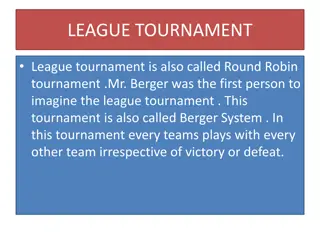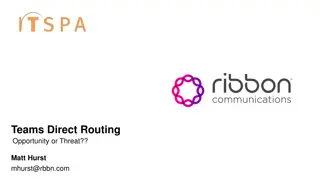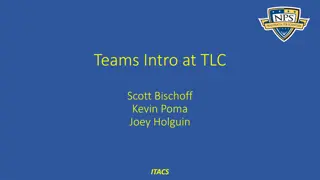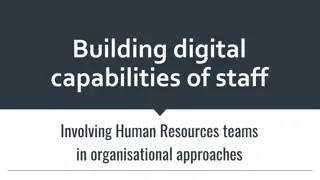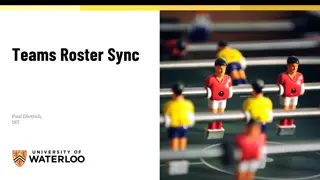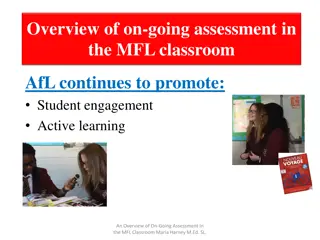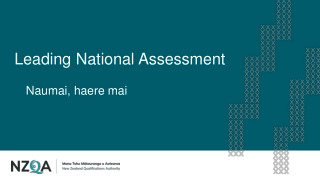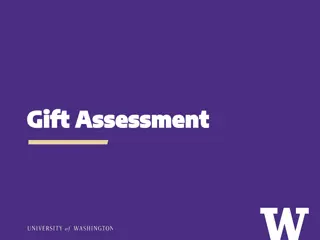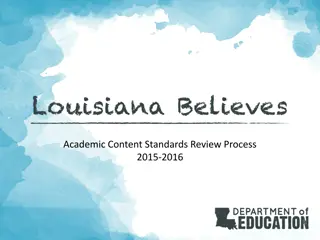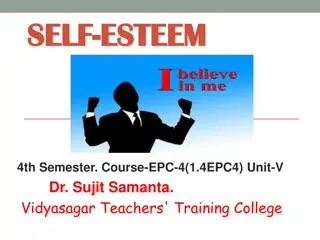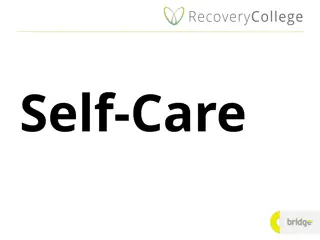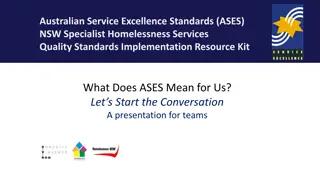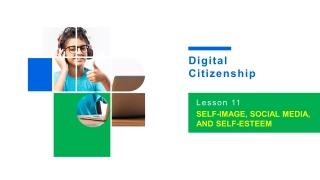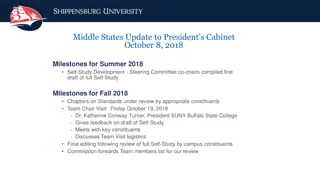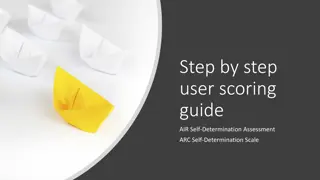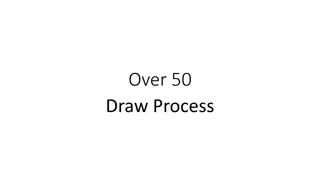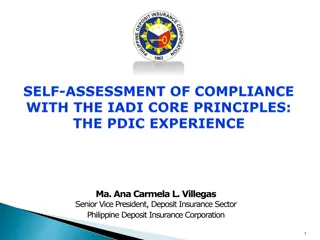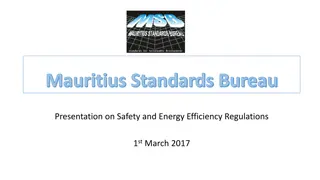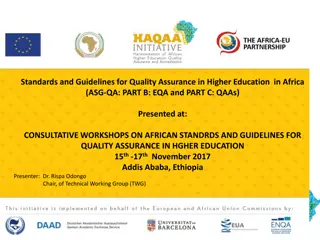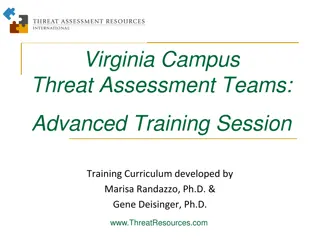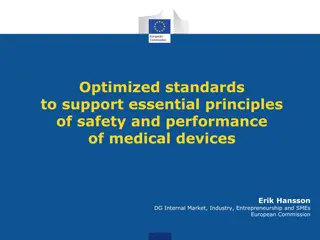Standards Teams Self-Assessment Process Overview
Developing a deep understanding of AdvancED Standards and Indicators, this process empowers leaders to guide school-based Standards Teams in self-assessment. It focuses on implementing standards confidently, understanding the accreditation process, and delivering key deliverables like Stakeholder Feedback Diagnostic and Student Performance Diagnostics.
Download Presentation

Please find below an Image/Link to download the presentation.
The content on the website is provided AS IS for your information and personal use only. It may not be sold, licensed, or shared on other websites without obtaining consent from the author. Download presentation by click this link. If you encounter any issues during the download, it is possible that the publisher has removed the file from their server.
E N D
Presentation Transcript
SELF-ASSESSMENT WORKBOOK MODULE 1
Standards Teams Self-Assessment Process Goal: Participants will develop a deep understanding of the AdvancED Standards and Indicators and the capacity to lead school-based Standards Team through the process of self-assessment 4 Able to lead standards teams with confidence, and support other school based leaders through the process Complete understanding of the standards, indicators and process and can successfully implement in my building Understand accreditation process and basic deliverables due; need assitance with process Little or no understanding 3 2 1
Standards Teams Self-Assessment Process 5 Deliverables: 1. Stakeholder Feedback Diagnostic 2. Self-Assessment (scores and narrative) 3. Student Performance Diagnostic 4. Executive Summary 5. Assurances (after completion of SIP) *Evidences and Artifacts are embedded within the narrative
Standards Teams Self-Assessment Process Organizing to Interact with New Content: Standards Teams: 5 Standards Teams composed of teachers from various grade levels and content areas As a group Unpack the Standard and discuss indicators Rate each indicator on standard enter into Survey Monkey List Powerful Practices and Opportunities for Improvement Discuss artifacts that will support the ratings of the indicators 4
Standards Teams Self-Assessment Process Helping to Process New Content Using the Standard 1 template for Self Assessment Workbooks for Schools: Review and discuss each indicator Score the indicators individually Enter scores into Survey Monkey at school site use either Excel spreadsheet or Survey Monkey Discuss averages Check artifacts At the end of the Standard List Powerful Practices Opportunities for Improvement https://www.surveymonkey.com/r/CCPS-AdvancED-Schools https://www.surveymonkey.com/r/CCPS-AdvancED-District 5
Standards Teams Self-Assessment Process Reviewing Content: Standard deviation sheet +1 Standard Deviation = Powerful Practice -1 Standard Deviation = Improvement Priority Opportunities for Improvement AEN Average = AdvancED Network Average Artifacts Types Locations System in place 6
Standard 1: The school maintains and communicates a purpose and direction that commit to high expectations for learning as well as shared values and beliefs about teaching and learning. 1.1 The school engages in a systematic, inclusive and comprehensive process to review, revise and communicate a school purpose for student success. Score Level 4 The process for review, revision and communication of the school s purpose is clearly documented, and a record of the use and results of the process is maintained. The process is formalized and implemented with fidelity on a regular schedule. The process includes participation by representatives selected at random from all stakeholder groups. The purpose statement clearly focuses on student success. The school s process for review, revision and communication of the purpose statement is documented. The process is formalized and implemented on a regular schedule. The process includes participation by representatives from all stakeholder groups. The purpose statement focuses on student success. The school has a process for review, revision and communication of its purpose. The process has been implemented. The process includes participation by representatives from stakeholder groups. The purpose statement focuses primarily on student success. No process to review, revise or communicate a school purpose exists. Stakeholders are rarely asked for input regarding the purpose of the school. Possible Evidence Level 3 Level 2 Level 1 Purpose statements - past and present Minutes from meetings related to development of the school s purpose Documentation or description of the process for creating the school s purpose including the role of stakeholders Communication plan to stakeholders regarding the school s purpose Examples of communications to stakeholders about the school s purpose (i.e. website, newsletters, annual report, student handbook) Survey results Comments C:\Users\Mitevte\AppData\Local\Microsoft\Windows\Temporary Internet Files\Content.IE5\2165L09C\large-Clock-Calendar-2-66.6-12900[1].gif 7
Standard 2: The school operates under governance and leadership that promote and support student performance and school effectiveness. 2.1 The governing body establishes policies and support practices that ensure effective administration of the school. Score Level 4 Policies and practices clearly and directly support the school s purpose and direction and the effective operation of the school. Policies and practices require and have mechanisms in place for monitoring effective instruction and assessment that produce equitable and challenging learning experiences for all students. There are policies and practices requiring and giving direction for professional growth of all staff. Policies and practices provide clear requirements, direction for and oversight of fiscal management. Level 3 Policies and practices support the school s purpose and direction and the effective operation of the school. Policies and practices promote effective instruction and assessment that produce equitable and challenging learning experiences for all students. There are policies and practices regarding professional growth of all staff. Policies and practices provide requirements, direction for and oversight of fiscal management. Level 2 Policies and practices generally support the school s purpose and direction and the effective operation of the school. Most policies and practices promote effective instruction and assessment that produce equitable and challenging learning experiences for all students. There are policies and practices regarding professional growth of staff. Policies and practices provide requirements and oversight of fiscal management. Level 1 Little connection exists between policies and practices of the governing board and the purpose, direction and effective operation of the school. Policies and practices seldom or never address effective instruction and assessment that produce equitable and challenging learning experiences for students. There are few or no policies and practices regarding professional growth of staff. Policies provide requirements of fiscal management. Possible Evidence Governing body policies, procedures and practices School handbooks Staff handbooks Student handbooks Communications to stakeholder about policy revisions Comments C:\Users\Mitevte\AppData\Local\Microsoft\Windows\Temporary Internet Files\Content.IE5\2165L09C\large-Clock-Calendar-2-66.6-12900[1].gif 8
Standard 3: The schools curriculum, instructional design and assessment practices guide and ensure teacher effectiveness and student learning. 3.1 The school s curriculum provides equitable and challenging learning experiences that ensure all students have sufficient opportunities to develop learning, thinking and life skills that lead to success at the next level. Score Level 4 Curriculum and learning experiences in each course/class provide all students with challenging and equitable opportunities to develop learning skills, thinking skills and life skills that align with the school s purpose. Evidence clearly indicates curriculum and learning experiences prepare students for success at the next level. Like courses/classes have the same high learning expectations. Learning activities are individualized for each student in a way that supports achievement of expectations. Level 3 Curriculum and learning experiences in each course/class provide all students with challenging and equitable opportunities to develop learning skills, thinking skills and life skills. There is some evidence to indicate curriculum and learning experiences prepare students for success at the next level. Like courses/classes have equivalent learning expectations. Some learning activities are individualized for each student in a way that supports achievement of expectations. Curriculum and learning experiences in each course/class provide most students with challenging and equitable opportunities to develop learning skills, thinking skills and life skills. There is little evidence to indicate curriculum and learning experiences prepare students for success at the next level. Most like courses/classes have equivalent learning expectations. Little individualization for each student is evident. Level 2 Level 1 Curriculum and learning experiences in each course/class provide few or no students with challenging and equitable opportunities to develop learning skills, thinking skills and life skills. There is no evidence to indicate how successful students will be at the next level. Like courses/classes do not always have the same learning expectations. No individualization for students is evident. Possible Evidence Descriptions of instructional techniques Enrollment patterns for various courses Graduate follow-up surveys Course descriptions Course schedules Learning expectations for different courses Representative samples of student work across courses Posted learning objectives Lesson plans Survey results Comments C:\Users\Mitevte\AppData\Local\Microsoft\Windows\Temporary Internet Files\Content.IE5\2165L09C\large-Clock-Calendar-2-66.6-12900[1].gif 9
Standard 4: The school has resources and provides services that support its purpose and direction to ensure success for all students. 4.1 Qualified professional and support staff are sufficient in number to fulfill their roles and responsibilities necessary to support the school s purpose, direction and the educational program. Score Level 4 Clearly defined policies, processes and procedures ensure that school leaders have access to, hire, place and retain qualified professional and support staff. School leaders use a formal, systematic process to determine the number of personnel necessary to fill all the roles and responsibilities necessary to support the school purpose, educational programs and continuous improvement. Sustained fiscal resources are available to fund all positions necessary to achieve the purpose and direction of the school. Policies, processes and procedures ensure that school leaders have access to, hire, place and retain qualified professional and support staff. School leaders systematically determine the number of personnel necessary to fill all the roles and responsibilities necessary to support the school purpose, educational programs and continuous improvement. Sustained fiscal resources are available to fund positions critical to achieve the purpose and direction of the school. Level 3 Level 2 Policies, processes and procedures describe how school leaders are to access, hire, place and retain qualified professional and support staff. School leaders determine the number of personnel necessary to fill the roles and responsibilities necessary to support the school purpose, educational programs and continuous improvement. Sustained fiscal resources are available to fund most positions critical to achieve the purpose and direction of the school. Policies, processes and procedures are often but not always followed by school leaders to access, hire, place and retain qualified professional and support staff. School leaders attempt to fill the roles and responsibilities necessary to support the school purpose, educational programs and continuous improvement. Sustained fiscal resources rarely are available to fund positions critical to achieve the purpose and direction of the school. Level 1 Possible Evidence Policies, processes, procedures and other documentation related to the hiring, placement and retention of professional and support staff School budgets for the last three years Documentation of highly qualified staff Assessments of staffing needs C:\Users\Mitevte\AppData\Local\Microsoft\Windows\Temporary Internet Files\Content.IE5\2165L09C\large-Clock-Calendar-2-66.6-12900[1].gif Comments Survey results 10
Standard 5: The school implements a comprehensive assessment system that generates a range of data about student learning and school effectiveness and uses the results to guide continuous improvement. 5.1 The school establishes and maintains a clearly defined and comprehensive student assessment system. Score Level 4 School personnel maintain and consistently use a comprehensive assessment system that produces data from multiple assessment measures, including locally developed and standardized assessments about student learning and school performance. The system ensures consistent measurement across all classrooms and courses. All assessments are proven reliable and bias free. The system is regularly and systematically evaluated for reliability and effectiveness in improving instruction, student learning and the conditions that support learning. School personnel maintain and use an assessment system that produces data from multiple assessment measures, including locally developed and standardized assessments about student learning and school performance. The system ensures consistent measurement across classrooms and courses. Most assessments, especially those related to student learning, are proven reliable and bias free. The system is regularly evaluated for reliability and effectiveness in improving instruction, student learning and the conditions that support learning. Level 3 Level 2 School personnel use an assessment system that produces data from multiple assessment measures about student learning and school performance. The system generally provides consistent measurement across classrooms and courses. Some assessments, especially those related to student learning, are proven reliable and bias free. The system is evaluated for effectiveness in improving instruction, student learning and the conditions that support learning. Level 1 School personnel maintain an assessment system that produces data from assessment measures about student learning and school performance. The system provides a limited degree of consistent measurement across classrooms and courses. Assessments are seldom proven reliable and bias free. The system is rarely or never evaluated for effectiveness in improving instruction, student learning and the conditions that support learning. Possible Evidence Brief description of student assessment system including range of data produced from standardized and local assessments on student learning and school performance Evidence that assessments are reliable and bias free Documentation or description of evaluation tools/protocols C:\Users\Mitevte\AppData\Local\Microsoft\Windows\Temporary Internet Files\Content.IE5\2165L09C\large-Clock-Calendar-2-66.6-12900[1].gif Comments Survey results 11
Process at School Sites Establish Standards teams cross representation from departments or grade levels Break out and follow process modeled Reconvene and report out Establish consensus on scoring 12
For more information or assistance, please contact Dr. Terrie Mitev at 70022 mitevte@collierschools.com ~or~ Jodi Cronin at 70028 cronij@collierschools.com 13
